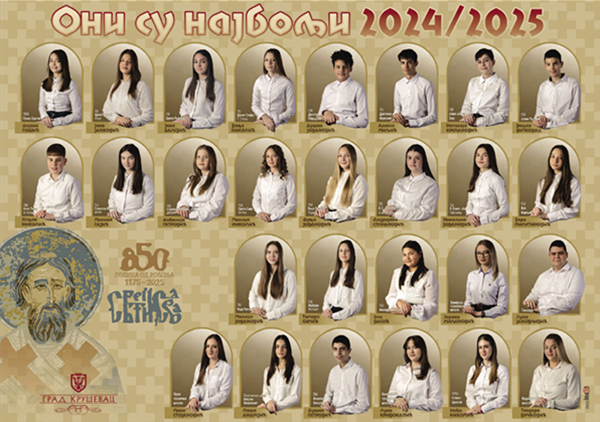SLOBODAN GRASIC: WE CAN SAVE CELIJE LAKE BY WISE DEVELOPMENT
Postavljeno: 03.05.2021

“Wise development is different from sustainable development because it’s not about exploitation but it cares for the area to become more untouched, to be damaged as less as possible” says for krusevacgrad.rs Slobodan Grasic, head of microbiological laboratory in Water factory Majdevo. Grasic is following ecosystem of Celije Lake for 3 decades, he was the first to warn of mycrocystines in the lake water and he participated in first Study on declaring Celije Lake to be Landscape of special characteristics, which is a base for the current Study that should finally secure adequate protection of the lake against over exploitation and various pollution
So called “lake blossoming”, occurrence of blue-green bacteria (cyanobacteria) was noted in Celije Lake in 1988 for the first time. Blue-green “carpet” on the surface of water disturbed citizens and confirmed what Grasic was saying since the beginning of Water factory building in Majdevo – that decision to supply Krusevac with drinking water from the lake, wasn’t followed by corresponding measures of sanitary protection of this source.
When the lake blossomed…..
What happened in that 1988 we asked Slobodan Grasic, biologist who devoted his whole professional life to studying Lake Ecosystem and fighting for its preservation.
“Last winter former head of dam lowered the level of the lake for 4m, because he thought, if he lowers the water in the winter, when the spring comes water will be refreshed. That’s how he deranged thermic structure, heat regime of the lake and all living beings in it. Next year we had hot and arid summer and by the end of July first species of cyanobacteria Mycrocystis aeruginosa occurred, and right after that Aphanizomenonflos-aquae. This second species made about 50cm thick scumin Zlatare village.
Coping with this occurrence was completely new for employees of Water factory, as well as for other experts and scientific institutions, because only since ‘70s there was any knowledge about toxic effect of cyanobacteria. There was very little knowledge about their toxicity and all research that was done were fundamental highly scientific research, so the public knew very little about them, even World Health Organization, Grasic stated.
“We didn’t know much, but we started with assumption that both species can be toxic. Main accent was on Aphanizomenonflos-aquae, because there was an assumption it produces saxitoxin, extremely potent neurotoxin that kills animals within hours. Not telling anything to the people in the villages, we observed cows which they watered in the lake. Nothing happened. Since the Aphazoimenonovercomed at the end and it was the only toxin left in the lake, we came to conclusion that the lake is not toxic. Anyway, since we already had working ozone generators, we were protected no matter what happens. That was the biggest blossoming, but not the only one that happened on the lake. This occurrence was recorded, as brief this time, in 2001, too, as a consequence of Ministry of defense’s order to lower the water level for 20 m, Grasic remembers. And then there was another arid year, 2003.
Pioneers in cyanotixin analysis in Balkan
During that 2003 summer, more than 2 m of water was lost, which means that elevation of the lake fell from 277 m to 275 m. At the end of the summer M. aeruginosa appeared, and after that also A. flos-aqua, which however didn’t suppress the first species as earlier, instead, as Grasic explains, they made some kind of seesaw in quantity shifting. Experts noticed one, so far unknown and uncommon occurrence: this seesaw continued even during autumn although the most of cyanobacteria, except the ones that live in high mountains and near the poles, like heat.
“According to snail pestilence in the lake, in the end of July we had an indication that Microcystis is toxic. We intensified the ozone treatment of water, from 1.4 to 2.1 mg of ozone per liter, which is enormous doze, and by doing that we removed Microcystis from drinking water, which showed up in the analysis later. The equipment for extracting Microcistins from water was purchased and in 2003 we acquired one of only two ELISA tests in the world, for Microcystin analysis and in the Institution for public health, together with dr Dusica Simonovic, became the first who found Microcystins in cellular material and in huge concentration, too. We were the first in the Balkans who did that.”
Water blossoming continued in 2004, but in somewhat milder form. Answering the question if some interventions, other than in drinking water processing, could have been done in the lake itself, Grasic is unambiguous:
“Regarding the lake, there is no intervention possible. Any intervention can be counterproductive”
For settlements by the water – key is in ecotourism
Degradation of water in Celije Lake is a consequence of many factors which Grasic puts into two groups:
“The lake by its morphometry, considering its average depth is 13 m, has to be eutrophic, no matter what protective measures had been implemented, since for lakes in moderate climate areas it is a rule that they should be deeper than 18 m in order to have lower organic production – the lower organic production the better quality of water.”
He is reminding that the lake was made for various purposes, that two villages remained next to the lake, and no sanitary measures have been taken.
“The moment when water supply function occurred, the lake could have been surrounded with a fence according to Law at that time. We had a wire around the area where the water is being taken by the Water factory, but not around the rest of the lake, because the decision makers thought it is too expensive. There would not be fishing in the lake, maybe there would be two beaches where the villages are, and that’s all. There wouldn’t be any illegal constructions, because it wouldn’t be interesting for that purpose. It wouldn’t be convenient for camping either and the lake’s surroundings would be protected.” our interlocutor thinks.
A connection with people living around the lake should be established, he says, we should put the lake under protection and start a wise, not sustainable development.
“Wise development differs from sustainable because it’s not about exploitation but it takes more care that the area stays intact as much as possible, not to be damaged. This means, if the habitants would start, and they can, rural tourism, they would keep the lake as it is and the whole area would be protected better. Ecotourism with two beaches – that would completely resolve the problem of those settlements by the lake.”
However, he warns that in those circumstances the lake would be exposed to so-called undotted pollution.
Phosphorus enrichment of the lake
“Undotted pollution means that, when rain falls down, all water that flows from all surfaces: agricultural and eroded fields, ends up in the lake. Also from Brus and Blace and all agricultural activities there, especially in Blace. That is how huge amounts of phosphor ends up in the lake, and that leads to constant instability of two crucial microelements in the water: azote and phosphor.” Grasic explains. He adds that there isn’t much azote in the lake, but there is enough for normal organic production, but phosphor is much rarer in the nature and it is usually a limiting factor of the organic production.
“In time phosphor piled up in the lake, concentration was increasing, and it is still increasing, which can be seen in our data, and that led to eutrophication, increased organic production, increasing trophic level and decreasing biodiversity. So, the number of spices in phytoplankton is decreasing, and as a consequence the same happens on other levels of trophic network made of food chain. The whole living settlement is impoverished and biodiversity decreased.”
However, since all ecosystems seek for balance in certain climate conditions, Grasic says Celije Lake came into the pseudo climax, which is a characteristics of ecosystems, trying to remain stable in the conditions that are constantly changed by humans.
“If a community is created in certain environmental conditions, which is stable by content and number of species, it will last until those conditions are drastically changed. That is called climax in one community. For example, oak forests in our hills, beech forests in the mountains, etc. Same happens to water ecosystems. However, there is no climax in the lake, because that balance is shifted all the time because of phosphor enrichment situation. That’s how we had phytoplankton impoverishment, and then its enrichment begun, but not in the way it would happen in natural conditions, yet opposite, in the conditions that are constantly keeping different from natural. Since we continued to change those conditions, a pseudo climax was made and that could have been a happy coincidence, because there used to be only two or three spices of cyanobacteria in phytoplankton, and now there are at least twenty, which means that they are competitive and neither one can prevail, the way it used to happen.”
On the other hand, that water is more difficult to process, Grasic warns.
“Larger amount of chemicals is used, so the water production is becoming more expensive, and all the changes that are happening require more extensive laboratory work.”
Gallery forestis protecting the lake…
What happens in the lake’s basin, what comes with groundwater through the ground and enters the lake, cannot be measured directly, our interlocutor says, but the coast erosion and influence of immediate surroundings can.
“Influence of immediate surroundings is very fast and direct. What comes from the Radojkovic area, actually from the place where we extract water, comes unchanged, but what comes from Blatasnica and Zlatare is being somewhat purified on the way of 9 km, which is the length of the lake. When facilities are made for purification of waste water from Brus and Blace, we will gain a lot in the protection. But the problem is not only Brus and Blace” Grasic warns. He reminds us that there are tourist settlements above Brus, on Kopaonik Mountain, which are also causing pollution and we don’t know what kind of purification system they have, also there are fisheries along the Rasina River, which cause a huge pollution, too.
“There is also agricultural land next to Blatasnica and Rasina River. And all of that wouldn’t be such a problem if the gallery forest was preserved. Gallery forest are bushes and trees that grow along a river shores. It is a powerful protection, even during huge rainfall, but we don’t have them, because we destroyed them. I believe we can change this if we cooperate with people who live by the river. This would be good for them too, they would have fewer incidents, during rainfall. This would protect the lake and those parts of the river flows.
… And durability of the lake is preserved by forests
“When the lake was designed in 1965, its anticipated duration was about 50 years, or until 2030. However, erosion wasn’t as widespread as expected, because the area was intensively afforested.” Grasic answers to our question on how long will the lake last. He says that forest restoration lasted until ‘90s, until the beginning of the war, when they started to cut them down again. So, forests are the ones that kept the lake safe from large erosion.
“I’ve seen that very soon. Way back when, during the war 1999, we cleared out the Zlatare basin, by order of Ministry of defense, and we saw that it is not too much filled in, I made an assumption which many thought of as crazy, that the lake can last for 200 or 300 years. Now that has been shown by expert research. Duration of the lake will be much longer and erosion coefficient is lower than expected.”Grasic concludes.
If there will be enough drinking water, it depends on how we will treat forests in the future.
“We have less and less rainfalls, and water flow through the lake is decreasing. Between 1929 and 1965 when the lake was designed, middle water flow was around 6 cubic meters per second. Now it’s around 4,7. Big question is when will Rasina River dry, and it depends on health and integrity of forest ecosystems on Kopaonik, Goch and Zeljin, as well as Jastrebac, because Blatasnica comes from Jastrebac. For now, we are still safe because of what those forests used to be.”
About the lake and municipal waste
“Municipal waste that ends up in the lake is actually a waste from the confluence, because its disposal is not resolved. We have several illegal, half covered or covered landfills next to the Zilinacka River, which is the largest tributary of the lake, since next to it is a road to Zupa. And that’s the situation in the whole confluence. Many of those landfills are hidden with earth and vegetation. It is very hard to solve this issue even when the waste from the whole confluence is being gathered. These kind of problems occur in countries that are much more progressive in environment protection. They also arrange waste gathering actions occasionally. Still, it is somewhat resolvable with better surveillance and fines, like we have in bigger cities, but I think we are still far from that” Grasic says.
Fishing and springs
“Regarding fishing, our country has a paradox that first rank springs are part of fishing area” says Grasic. Example of how can water be influenced is that our fisherman brought grass carp into the lake and destroyed water plants that kept the phytoplankton balance: algae, cyanobacteria… And this additionally contributed to impoverishment of lake’s living world in general. “Besides that, under the cover of sports fishing, there are many people who are at the lake all the time. Based on a few permits they got for their family members, they actually do commercial fishing, especially of perch and carp. That’s a real danger. Even fishing from a boat is less harmful, because if there was declared anchorage, and we know that a boat cannot get near every shore, they wouldn’t cut vegetation, start fire, dig into the ground and destroy gallery forests, they wouldn’t contribute to erosion” specifies our interlocutor.
Last time from a dead end
We asked Slobodan Grasic if he believes that all of these announced measures will finally resolve matter of the lake protection. “I hope that it will finally work. We started from a dead end too many times and didn’t get far. Now this has some perspective of succeeding. I think it is finally going the way it should be, maybe the social climate is also changed, maybe the fact that we talked so much about it all this years is starting to give some results.” Our interlocutor believes. He reminds of the fact that Srbijavode, the company that governs the lake now, is a very small company that has jurisdiction over all water and areas around water in Serbia. According to what they have under their jurisdiction they are huge, but comparing to the task given to them, they have very small number of employees. Environmental Agency, whose obligation is to investigate lakes, also has few employees, so every lake is being investigated once in a few years. These are enormous gaps. So, even though Celije Lake formally belongs to the state, we are the most interested in it and it will be somehow taken over to our care. That will be extremely good.”
N.Budimovic
SRB – https://krusevacgrad.rs/slobodan-grasic-jezero-celije-mozemo-spasiti-mudrim-razvojem/









